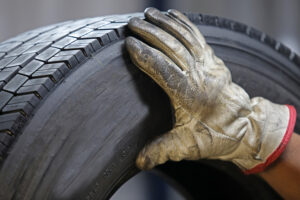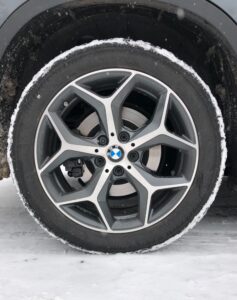Navigating Winter Roads: Understanding Tyre Traction in Cold Conditions
As winter blankets the roads in snow and ice, the importance of tyre traction becomes paramount for safe and confident driving. Understanding how tyre traction works in cold conditions is crucial for every driver. In this blog, we’ll delve into the factors affecting tyre traction in winter and provide tips on how to ensure your vehicle stays sure-footed on icy and snowy roads.
Tyre Tread Design
Tyre traction begins with the tread pattern on your tyres. Winter tyres, also known as snow tyres, are designed with deeper grooves and unique tread patterns that bite into snow and ice. The channels in the tread help evacuate water and slush, preventing hydroplaning and enhancing grip on slippery surfaces. When facing winter conditions, consider investing in tyres specifically designed for the colder months.
Rubber Compound
The rubber compound used in winter tyres is formulated to remain flexible in cold temperatures. Traditional all-season tyres can become rigid and lose traction in freezing conditions. Winter tyres maintain their elasticity, allowing them to conform to the road surface and provide better grip, even when temperatures drop significantly.
Siping for Enhanced Traction
Sipes are small slits or grooves in the tread blocks of tyres. These tiny channels create additional biting edges that help enhance traction on ice and packed snow. Winter tyres often feature an increased number of sipes, optimising their ability to grip the road in challenging winter conditions.
Maintaining Proper Tyre Pressure
Proper tyre pressure is critical for optimal traction, especially in winter. Cold temperatures can cause tyre pressure to drop, affecting handling and performance. Regularly check and maintain the recommended tyre pressure levels to ensure your tyres provide the best possible grip on icy and snowy roads.
Drive System and Traction Control
Modern vehicles often come equipped with advanced drive systems and traction control features. All-wheel drive (AWD) and electronic stability control (ESC) work in tandem with your tyres to enhance traction and maintain control in slippery conditions. However, these systems are most effective when combined with winter tyres, emphasising the importance of having the right tyres for the season.
Safe Driving Practices
Even with the best winter tyres, safe driving practices are crucial in winter conditions. Reduce your speed, increase following distances, and avoid sudden movements. Gentle acceleration, braking, and steering inputs can help prevent skidding and maintain control on icy surfaces.Understanding tyre traction in winter is essential for staying safe on cold and slippery roads. Choosing the right tyres, maintaining proper tyre pressure, and practising safe driving habits all contribute to ensuring your vehicle performs optimally in winter conditions. Invest in quality winter tyres, and remember that taking proactive steps to enhance traction is an investment in your safety and the safety of others on the winter roads.




